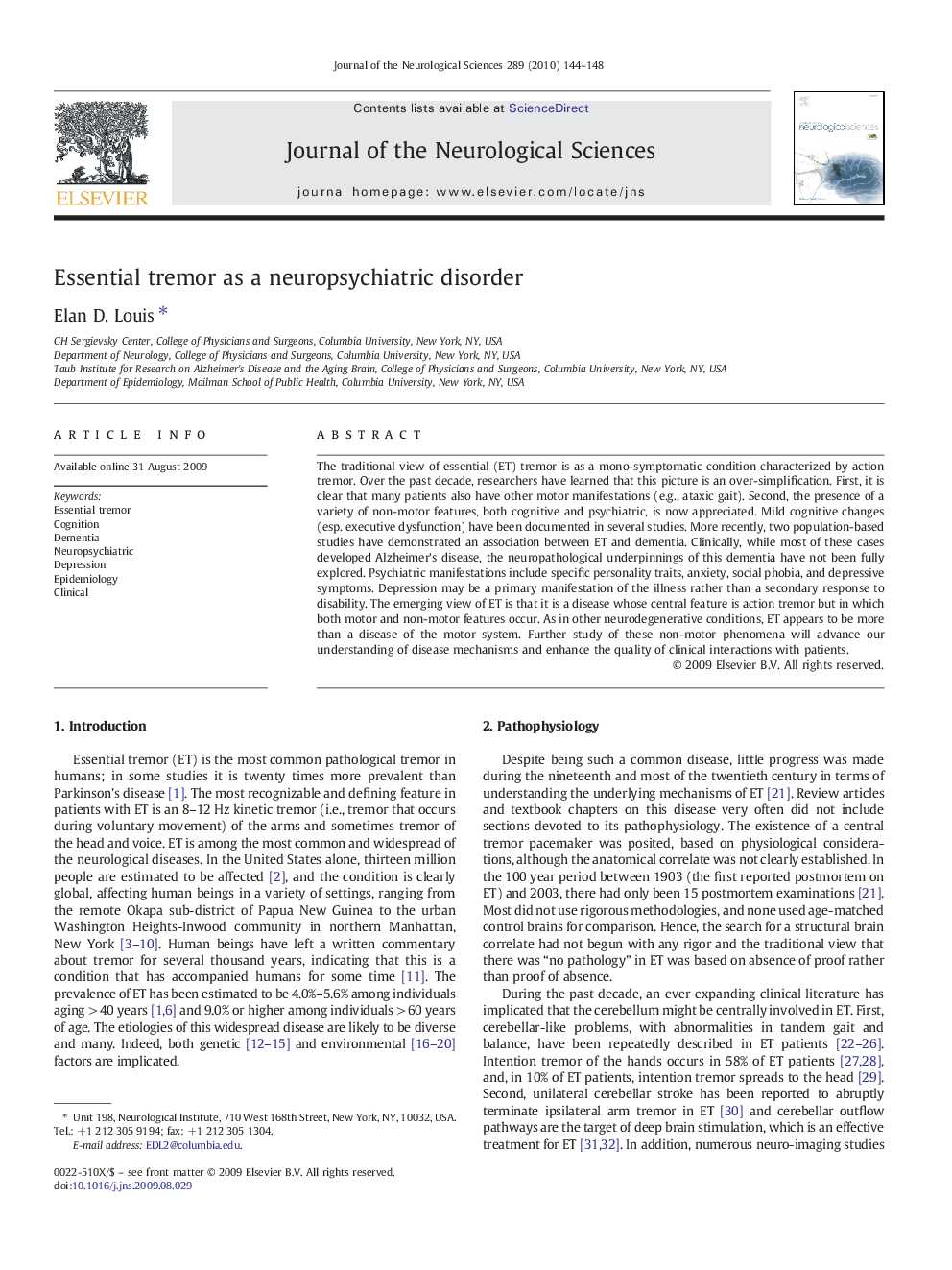| Article ID | Journal | Published Year | Pages | File Type |
|---|---|---|---|---|
| 1914884 | Journal of the Neurological Sciences | 2010 | 5 Pages |
The traditional view of essential (ET) tremor is as a mono-symptomatic condition characterized by action tremor. Over the past decade, researchers have learned that this picture is an over-simplification. First, it is clear that many patients also have other motor manifestations (e.g., ataxic gait). Second, the presence of a variety of non-motor features, both cognitive and psychiatric, is now appreciated. Mild cognitive changes (esp. executive dysfunction) have been documented in several studies. More recently, two population-based studies have demonstrated an association between ET and dementia. Clinically, while most of these cases developed Alzheimer's disease, the neuropathological underpinnings of this dementia have not been fully explored. Psychiatric manifestations include specific personality traits, anxiety, social phobia, and depressive symptoms. Depression may be a primary manifestation of the illness rather than a secondary response to disability. The emerging view of ET is that it is a disease whose central feature is action tremor but in which both motor and non-motor features occur. As in other neurodegenerative conditions, ET appears to be more than a disease of the motor system. Further study of these non-motor phenomena will advance our understanding of disease mechanisms and enhance the quality of clinical interactions with patients.
